When you think about ND filters, IDX is probably not a name that comes to mind. IDX makes batteries, so what are they doing making ND filters? Well, let’s find out.
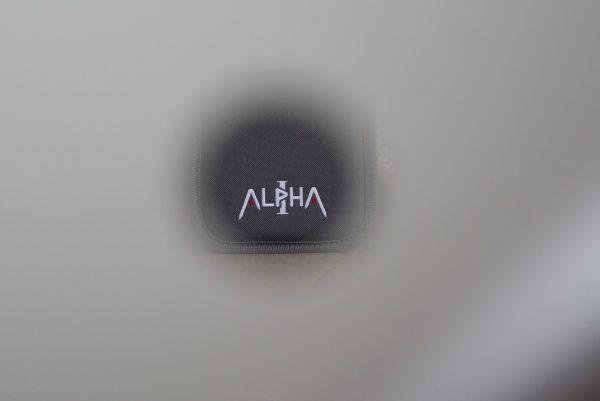
The Japanese battery giant has been synonymous with producing Li-Ion batteries for almost 30 years, and in 2017 they branched out and started making ND filters. The ALPHA-I ND filters have been out for quite a while now but I thought it was about time to have a closer look at them and see how they compare to some of the best ND filters on the market.
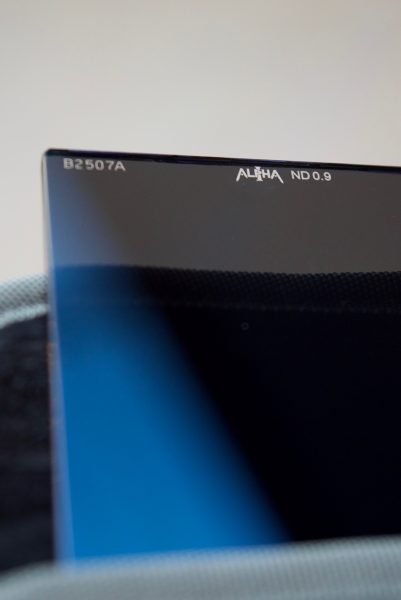
IDX are touting their ALPHA-I ND filters as being a high-end product, and in that respect, they need to not only be as good as their competition but also well priced. Any company entering a market they have never been in before is taking a risk. With ND filters there are already very established companies that have been on the market for a long time. This puts added pressure on a company like IDX, simply because they aren’t known as a filter company.

IDX claims that their ND filters are manufactured using a “Special process” that allows each ALPHA-I filter to have multi-layered protection inside and out. This, in theory, should make them more scratch resistant and better suited to the rigours of field use.
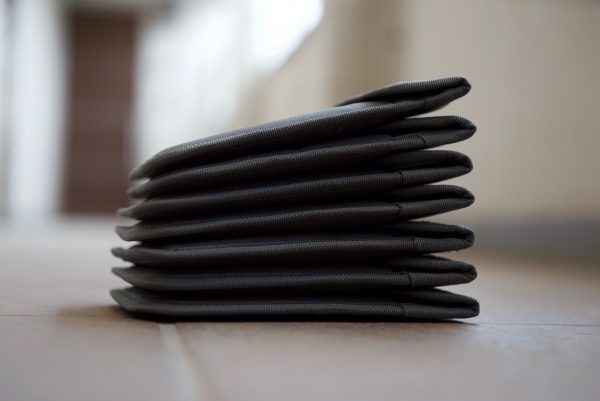
The IDX ALPHA-I ND filters only come in the standard 4″ x 5.65″ PV size and they are available in 7 standard densities. Those densities are:
0.3
0.6
0.9
1.2
1.5
1.8
2.1
According to IDX, the ALPHA-I ND filters provide zero colour shift and colour neutrality. This is a big claim and from my experience, there is no such thing as an ND filter that remains perfectly colour neutral and has zero colour shift. Some of the very good ND filters come very close, but from my testing, I’m yet to see one that is perfect.
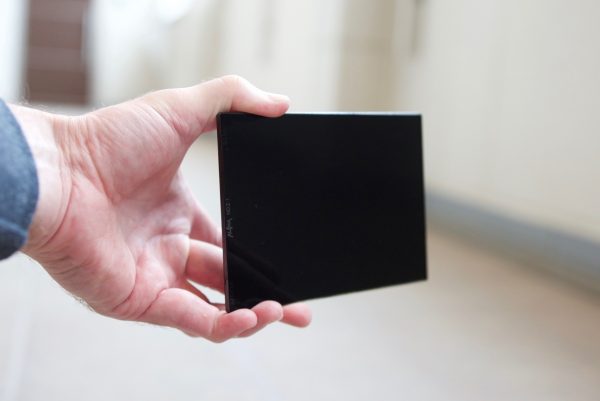
If you are going to market your filters as being “high-end” then those filters must maintain consistency across multiple different sets. If you are working on a production with multiple cameras then you expect the filters you are using will be exactly the same no matter how many different sets you are using. Too often I have seen discrepancies where the exact same ND filter used on one camera doesn’t look the same on the other. Keeping the colour quality performance consistent from camera to camera is very important. This is where the more expensive ND filters usually have an advantage. Consistency is key.
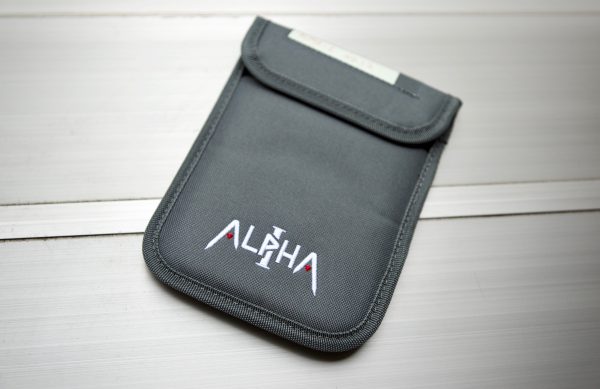
The IDX ALPHA-I ND filters are certainly not on the cheap side and retail for $595 USD each. That’s $4,165 USD for a set of 7. So how does that compare to some of the competition?
Mitomo TRUE ND
Each: $760 USD
Set of 7: $5,320 USD
NiSi NANO IRND
Each: $245 USD
Set of 7: $1,715 USD
ARRI FSND
Each: $720 USD
Set of 8: $5,760 USD
Tiffen NATural ND
Each: $549 USD
Set of 7: $3,843 USD
Lee ProGlass Cine
Each: $600 USD
Set of 7: $4,200 USD
Schneider RHOdium Full FSND
Each: $449.10 USD
Set of 10: $4,491 USD*
Formatt Hitech Firecrest ND
Each: $477.07 USD
Set of 10: $4,770.70 USD*
- These sets are available in 10 different strengths.
IDX told me that they designed their ALPHA-I filters to be better than Mitomo True ND filters, which are known to be the best when it comes to not having any colour shifting. At around the same time as the IDX Alpha-I ND filters were released, new competition came out in the form of Lee ProGlass Cine, Tiffen NATural ND, and ARRI Full Spectrum ND. According to IDX, they view the ARRI Full Spectrum ND filters as their closest competition. The ALPHA-I filters also protect against IR contamination.
Transmission
Below you can see a chart that was supplied by IDX that shows how the filters perform at various wavelengths. This claimed consistency is certainly impressive although Newsshooter doesn’t have any way of independently verifying these results.
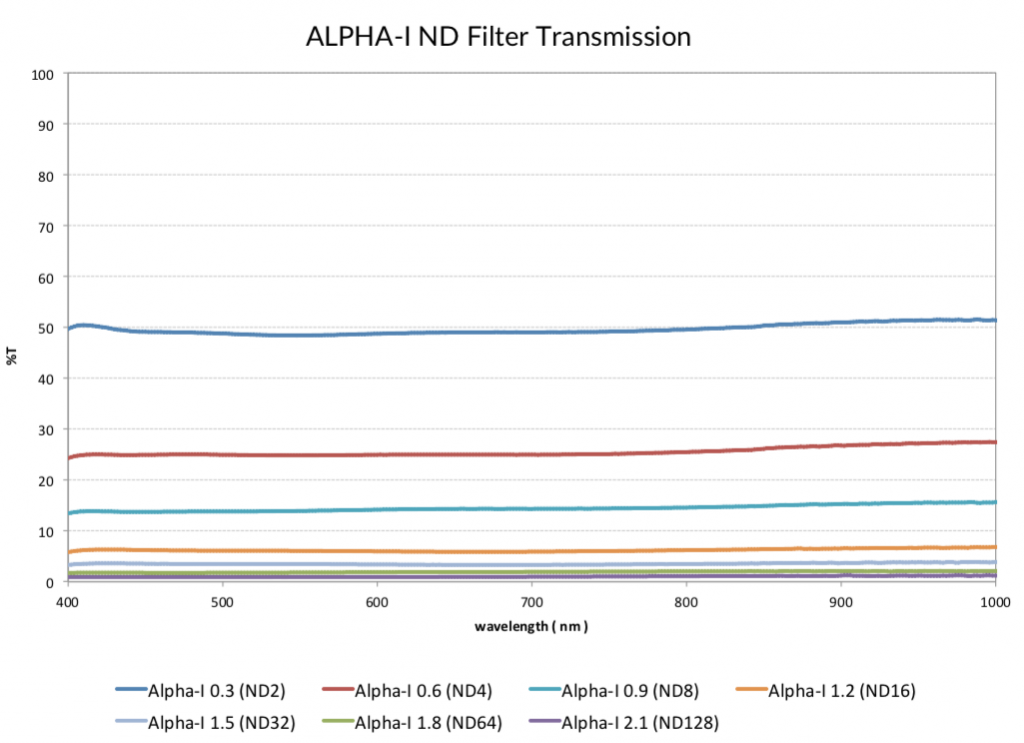
As a comparison, below you can see a similar graph showing how the Tiffen NATural ND filters perform.
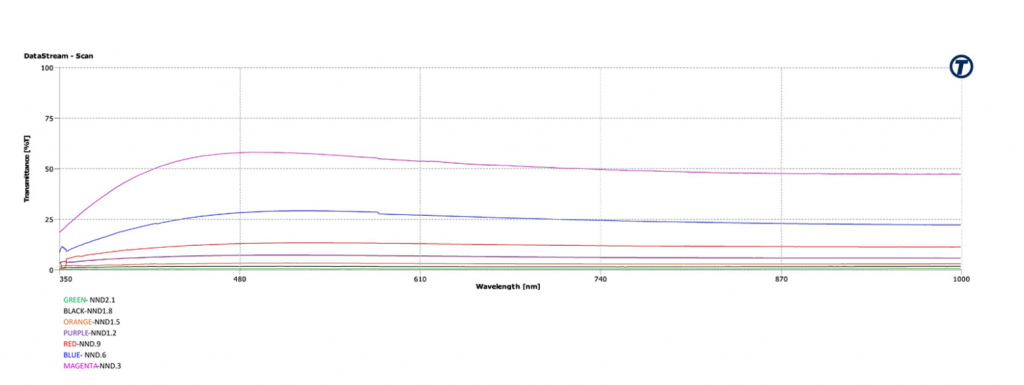
Performance
To test the IDX ALPHA-I filters I decided to put them head-to-head against the Mitomo TRUE ND filters. From previous testing, I have yet to find better ND filters (although I am yet to test the ARRI FSND or the new Tiffen NATural filters). As IDX told me they had specifically designed the ALPHA-I filters to be better than Mitomo True ND, I wanted to find out if they had succeeded.
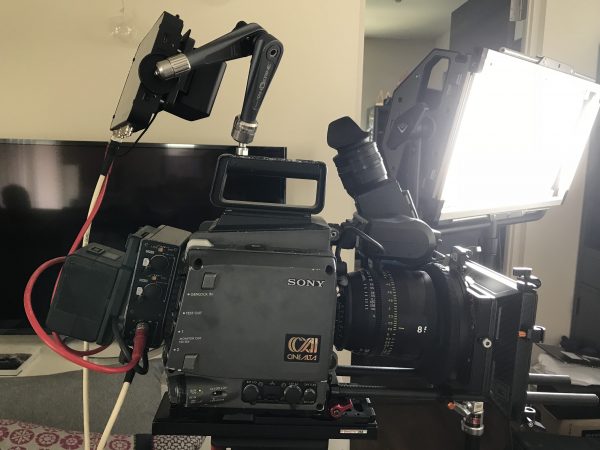
IDX claim that their filters have zero colour shift no matter what strength of ND is being used. I conducted a series of tests comparing the filters to images with no ND, and against the TRUE ND range to see how they would hold up. For my tests, I used the Sony F35 which is renowned for being a highly colour-accurate camera. This camera uses an RGB sensor and not a CMOS sensor with a Bayer pattern that is found in most new digital cinema cameras. The F35 was set in Hyper 35 gamma and F900R colour space so a consistent image could be maintained that would not require any LUT to be added or colour correction in post. I used a Tokina Vista 85mm T1.5 lens, Litepanels Gemini set at 5600k and a Bright Tangerine Misfit matte box. The camera was white balanced with no ND in and then kept the same for all of the tests. This was done so that you can see if there is any effect on the colour when adding the ND filters.
The first test was to see how much colour shift there was to the image when adding various amounts of ND. The majority of filters on the market hold up pretty well up to around 0.9 ND, but as soon as you start going any higher a lot of them start to exhibit a fairly noticeable colour shift. Not only did I want to see if there was a colour shift, but if there was, did it remain consistent as you started to introduce more ND. Unfortunately, I didn’t have my Mitomo TRUE ND 0.6 and I don’t own any TRUE ND filters past 1.5. To compare the TRUE ND filters against the IDX ALPHA-I filters at the strengths of 1.8 and 2.1 I had to stack two filters together.
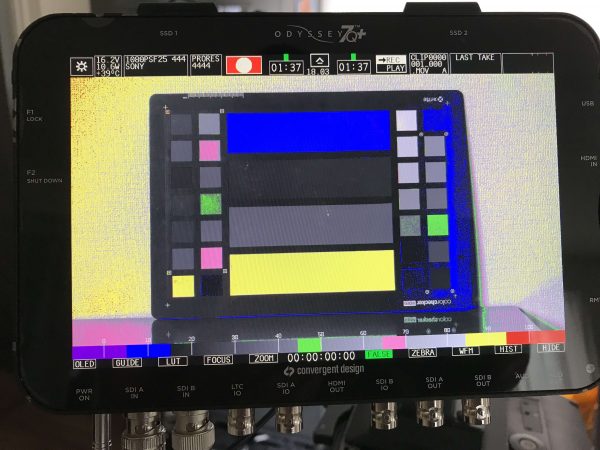
A Convergent Design Odyssey 7Q+ was used to not only record the tests but also to help keep the exposure consistent.
The results were quite interesting. As far as I’m concerned, the TRUE ND filters have set the benchmark for the last few years, but I think I may have found a new benchmark. The IDX ALPHA-I filters were in my opinion (and feel free to agree or disagree based on the tests), slightly more colour neutral than the TRUE ND. In saying that, the results were very close and both sets of filters performed exceptionally well.


Above you can see a comparison between the IDX ALPHA-I and TRUE ND 1.5 strength filters. From looking at the scopes, both are very similar, but the TRUE ND has the slightest push towards magenta.
The TRUE ND filters are more exposure accurate (maybe that is the wrong word to use) than the IDX ALPHA-I. I found that the TRUE ND listed strengths were extremely accurate, while the IDX ALPHA-I had small discrepancies. For example, when I was testing the IDX ALPHA-I at 0.3 the T stop was T8, when I changed to 0.9 it was just below T5.6 when it should have been T5.6. In comparison with the TRUE ND at 0.3. my T stop was T8, when I then changed to 0.9 the T stop was T5.6. From comparing all the different strengths the TRUE ND retained absolute consistency, while the IDX ALPHA-I was generally just slightly off.
Skin tones
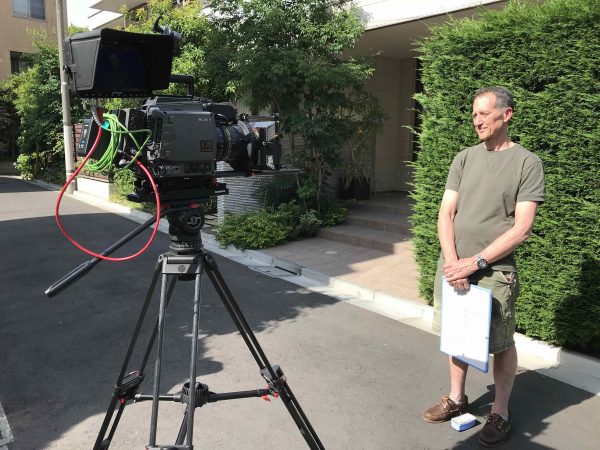
Shooting charts is one thing, but how do the IDX ALPHA-I filters look in the real world. Again I decided to do a head-to-head test comparing them against the TRUE ND filters. I used the Sony F35 and did a simple skin tone test outdoors to see if there was any noticeable difference between both sets of filters.
Both the TRUE ND and the IDX ALPHA-I performed very well. It was very hard to tell the difference between the two sets. To my eye, the IDX was perhaps a little better but it was like splitting hairs comparing the two. It didn’t seem to matter how much ND I was using the results stayed extremely consistent. Is either set completely colour neutral, no I don’t think so, but they are very close. If you wanted to have absolute colour neutrality it wouldn’t take more than a minute or so in post to make a minor adjustment to achieve the desired result.
Conclusion
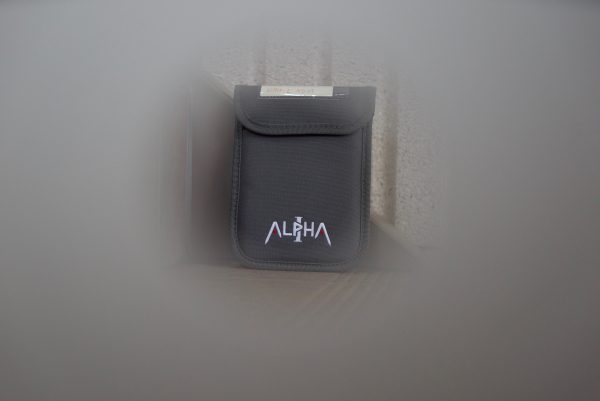
The IDX ALPHA-I filters certainly live up to the lofty expectations of being some of the best ND filters available. IDX claimed that they provide zero colour shift and colour neutrality, and while I don’t think that is completely true, they do come as close as any filter I have tested. At $595 USD each, they certainly aren’t cheap, but they are quite a bit less than both the ARRI FSND ($720 USD) and the TRUE ND ($760 USD). Considering these are the filters IDX set out to compete against I think the price is justifiable.
Who would have thought that a battery company would end up making exceptionally good ND filters, I certainly didn’t! Unfortunately, the IDX ALPHA-I will probably get overlooked, simply because they aren’t being made by one of the big filter manufacturers. Hopefully, this will change, because as they say, the proof is in the pudding and IDX has certainly come up with a very good recipe.





